Your search for "berliner secession" matched 118 page(s).
Showing results 81 to 90.
-
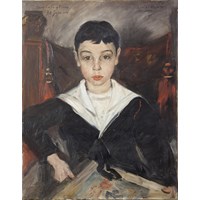 Portrait of Carl Ludwig Elias 7 1/4
Portrait of Carl Ludwig Elias 7 1/4
Carl Ludwig Elias was the son of the distinguished art critic, Dr Julius Elias, who did much to promote a true understanding of French Impressionism in Germany. He was a lawyer in Berlin and emigrated to Norway when the Nazis came to power. He was…
-
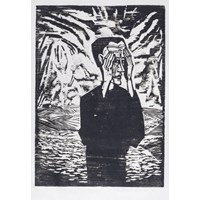 Man on a Plain
Man on a Plain
The taut, attenuated forms of this self-portrait and the pulsating lines coming from the sky reflect the oppressiveness and strain of the war years. The composition has been compared to Munch’s lithograph of The Scream of 1895 where the…
-
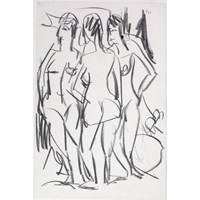 Three Nudes
Three Nudes
The agitated lines and distorted forms give the impression of a rapidly executed sketch of the three female figures momentarily pausing in movement. Kirchner was a brilliant draughtsman who continually sketched from life. Kirchner was the dynamic…
-
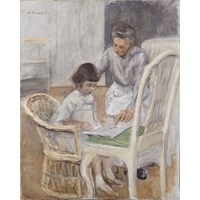 The Artist's Granddaughter with Her Nurse
The Artist's Granddaughter with Her Nurse
Alternative title: The Granddaughter in the Wicker Chair Liebermann’s granddaughter was a much loved and frequent visitor to the artist’s lakeside villa. In this relaxed and unsentimental study, she is shown with her book leaning on a chair, while…
-
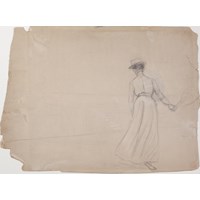 Woman Playing Tennis
Woman Playing Tennis
-
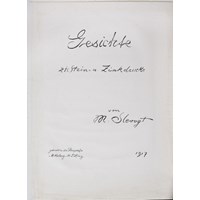 Visions - Title Page
Visions - Title Page
Slevogt was commissioned as a war artist, but, instead of producing a folio of morale raising propaganda, he produced a universal condemnation of war after returning from the front, which was condemned and censored by the authorities. He produced a…
-
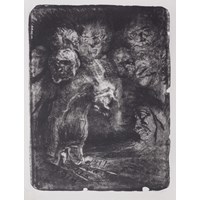 Visions Plate 1: The March into the Unknown
Visions Plate 1: The March into the Unknown
Plate 1 from ‘Visions’, 1916-17. Darkness characterises the first plate in the series, the heads of phantoms loom out of the gloom to look down on a lowly figure about to step forward across a series of ridges in the ground, each numbered with the…
-
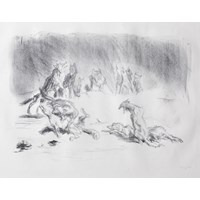 Visions Plate 2: Howling Hyenas
Visions Plate 2: Howling Hyenas
Plate 2 from ‘Visions’, 1916-17.
-
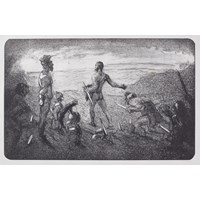 Visions Plate 3: Dragonseed
Visions Plate 3: Dragonseed
Plate 3 from ‘Visions’, 1916-17.
-
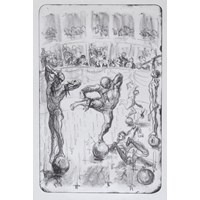 Visions Plate 4: Diplomats Sword Dance
Visions Plate 4: Diplomats Sword Dance
Plate 4 from ‘Visions’, 1916-17.